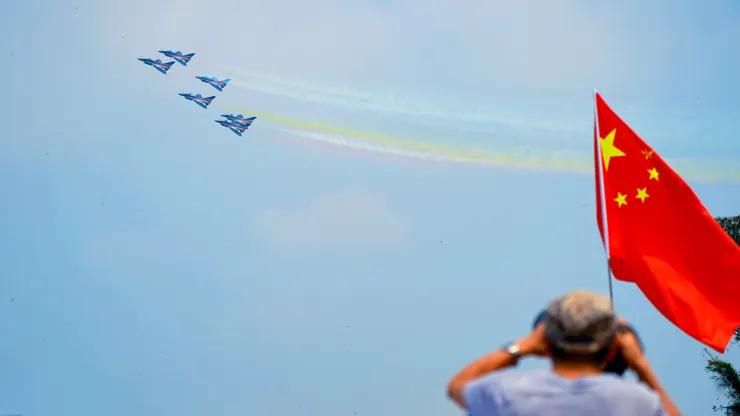The Ongoing Battle for Military and Political Presence in the Pacific

In October of this year, the Marshall Islands, situated in the Central Pacific, was the last of three island nations to renew their Compact of Free Association (COFA) with the United States, inking a $2.3 billion deal that continues a nearly eighty-year relationship. The agreement was a win for U.S. national defense strategy as the tug-of-war for influence in the region continues between the U.S. and China.
After World War II, the territories that were formerly claimed by Japan became a United Nations strategic-area trusteeship administered by the U.S., known as the Trust Territory of the Pacific Islands. The Trust Territory included the over 2,100 islands of Micronesia divided between three island groups: the Marshall Islands, Palau, and the Federated States of Micronesia (FSM). With the trusteeship set to end in 1985, the U.S. struck agreements directly with the three island nations in 1983. The U.S. agreed to provide ongoing financial support to the struggling islands in return for exclusive and unfettered U.S. military access.
Military access gives the U.S. a strategic foothold in the Pacific that is heavily supported through alliances and partnerships, such as the Partners in Blue Pacific (PBP) alliance. Comprised of Australia, Canada, Germany, Japan, New Zealand, South Korea, the United Kingdom, and the United States, the PBP alliance is the source of billions of dollars that flow to the fourteen underdeveloped nations of the Pacific Islands to address needs such as education, infrastructure, technology, healthcare, energy, and conservation—all in an effort to retain military, or kinetic, presence.
China has also set their sights on the Pacific Islands, but through political presence. That presence includes heavy investments in education, infrastructure, tourism, and business financing through the Belt and Road Initiative that seeks to expand influence across the globe. What that looks like for Pacific Islands is seen in massive infrastructure loans, grants, cash donations, diplomatic recognition of China over Taiwan, and a push for island nations to endorse agreements such as the 2022 “Common Development Plan”. The plan included police training and cooperation in traditional and non-traditional security, as well as a non-interference agreement meant to deter nations from discussing China’s human rights records. Additionally, it included the designation of marine development areas, and free trade agreements. While Pacific Islands have yet to agree to such a plan, they have not outrightly dismissed it either.
Over the past decade, the number of Pacific Island nations expressing neutrality or diplomatic ties with Taiwan has dwindled down to only four. The U.S. and its Pacific allies have recognized the pull China has exerted on the underdeveloped island nations. When these nations assume diplomatic ties with China, they are rewarded with monetary benefits to build and procure essential services that would otherwise be difficult to obtain. The downside to such benefits is that it is not without cost. For example, China owns over two-thirds of Tonga’s debt, which has climbed to nearly $200 million. For many, the fear is that an inability to make payments will allow China to seize property like they did to obtain a Sri Lankan port in 2015. The result is a high risk of debt distress and weakened diplomacy relations with traditional Pacific allies while strengthening relations with China. To combat this, the U.S. and other Blue Pacific members have countered with an emphasis on partnership, presenting a variety of aid programs, including extreme flexibility for loan repayments.
Pulling for military presence on one side is the U.S. and Blue Pacific members, while pulling on the other side for political presence is China, with the small, indebted islands of the Pacific caught squarely in the middle. The long-term effect of this tug-of-war stretched across the vast Pacific is yet to be seen, but what is known with certainty is the militarily and politically strategic advantage found in partnerships with Pacific Islands. As Sir Walter Raleigh observed, “For whosever commands the sea commands the trade; whosoever commands the trade of the world commands the riches of the world, and consequently the world itself.”
Article Written by Lisa Phair
Sources:
https://www.pacificislandtimes.com/post/us-marshall-islands-finally-sign-a-new-deal-under-cofa
https://www.cadtm.org/IMG/pdf/chinese_overseas_investment-aug_2021—final.pdf
https://apnews.com/article/australia-china-pacific-islands-aid-lowy-8aa525451292471edad2bcaa32be4b52
https://www.cnbc.com/2022/05/26/china-wants-10-pacific-nations-to-endorse-sweeping-agreement.html
https://www.cfe-dmha.org/LinkClick.aspx?fileticket=FaplgGeo2ps%3D&portalid=0
https://press-files.anu.edu.au/downloads/press/n7754/pdf/ch05.pdf
https://www.whitehouse.gov/wp-content/uploads/2022/09/Pacific-Partnership-Strategy.pdf
